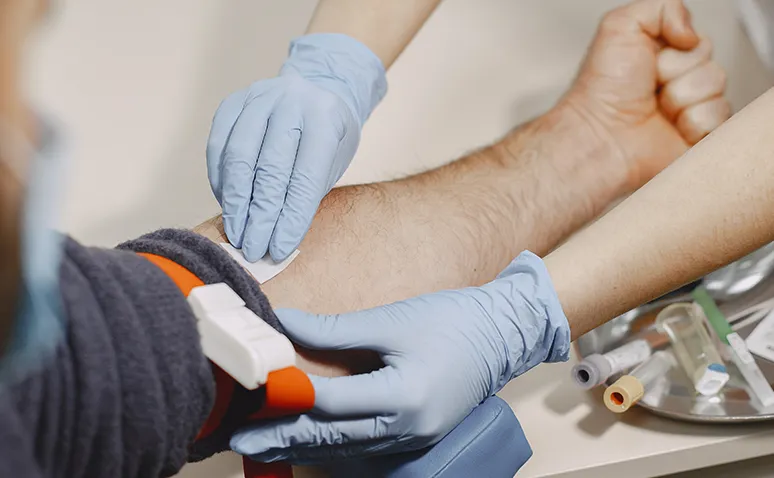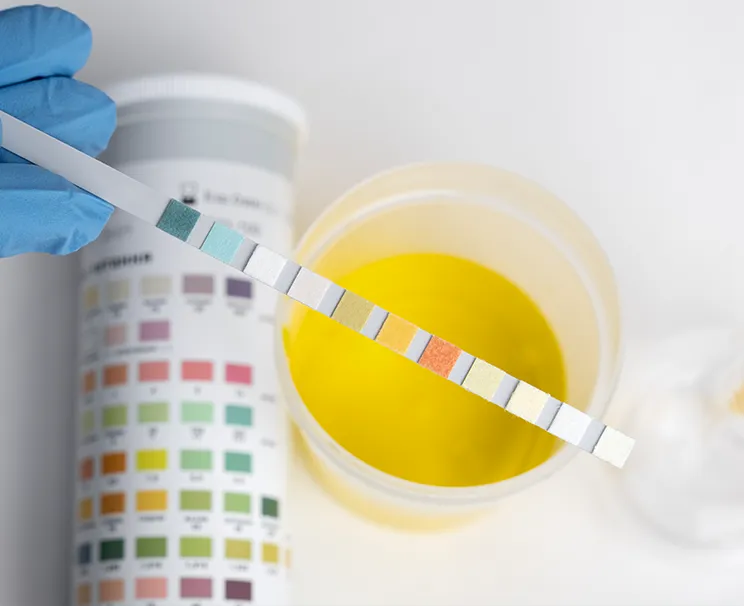Postprandial blood sugar refers to the blood sugar level after eating. This value, measured approximately two hours after a meal, indicates how the body processes carbohydrates and plays a crucial role in diagnosing diabetes.
Postprandial blood sugar measurements are critical in detecting diabetes or pre-diabetes conditions. These tests, conducted at regular intervals, are used to monitor whether blood sugar levels remain within normal limits. These measurements also help diabetes patients manage their blood sugar and contribute to the prevention of possible complications.

Symptoms of Low Postprandial Blood Sugar
Low postprandial blood sugar, also known as hypoglycemia, can manifest with various symptoms. At this point, the question “What should be the postprandial blood sugar limit?” becomes significant. Normally, the postprandial blood sugar limit should be between 70-140 mg/dL. When blood sugar falls below these limits, symptoms such as dizziness, sweating, trembling, and fatigue may occur.
Hypoglycemia is commonly seen in those undergoing diabetes treatment. Medications or insulin treatment can sometimes lower blood sugar more than desired. In this case, rapid sugar intake can help normalize blood sugar levels.
A postprandial blood sugar of 160 mg/dL is above normal and may indicate insulin resistance or diabetes. Insulin resistance is when cells do not respond adequately to insulin, causing blood sugar to remain high. Insulin resistance is associated with excess weight and lack of physical activity. Therefore, regular exercise and a healthy diet play a significant role in managing insulin resistance.
Blood sugar control is much more critical during pregnancy. The postprandial blood sugar value in pregnant women should be below 120 mg/dL. This is important for the health of both the mother and the baby. Gestational diabetes, known as pregnancy diabetes, can occur during pregnancy and requires regular blood sugar monitoring.
What Should Be the Postprandial Blood Sugar After One Hour?
Measuring postprandial blood sugar one hour after eating provides a quicker assessment. This value, which can vary according to age, should generally be below 140 mg/dL. However, these limits can change depending on overall health and other factors. As age progresses, the body’s capacity to produce and use insulin changes, which can affect blood sugar levels.
For diabetes patients, measuring blood sugar on an empty stomach and after meals should be a regular part of daily routines. This is important to prevent sudden spikes in blood sugar levels and to keep them balanced. Creating a personalized plan for diabetes management and regularly reviewing this plan is of vital importance.
The benefits of regularly measuring blood sugar are as follows:

Regularly measuring blood sugar plays an important role in maintaining a healthy life and managing diabetes. Therefore, regular monitoring of blood sugar levels is crucial for protecting individuals’ overall health and early detection of potential health problems.
What Should Be the Postprandial Blood Sugar in Children?
Blood sugar levels in children may differ from those in adults. It can also vary depending on age, growth rate, and individual health conditions. Generally, the blood sugar measured about two hours after a meal in healthy children should be below 140 mg/dL.
Existing health conditions, chronic diseases, or other health issues in children can also affect blood sugar levels. For children with type 1 diabetes, targets can be more specific and should be determined by physicians.
For children diagnosed with diabetes, blood sugar targets are set according to individual treatment plans. For children using insulin, physicians carefully determine post-meal target blood sugar levels and insulin dosages.











